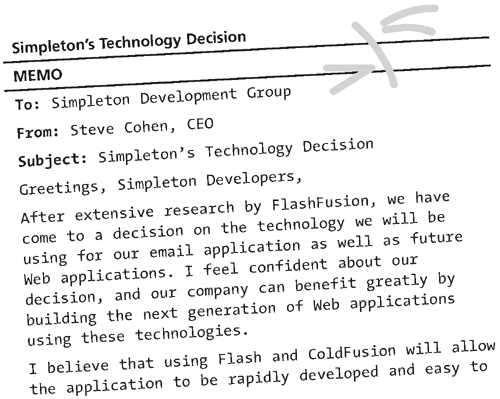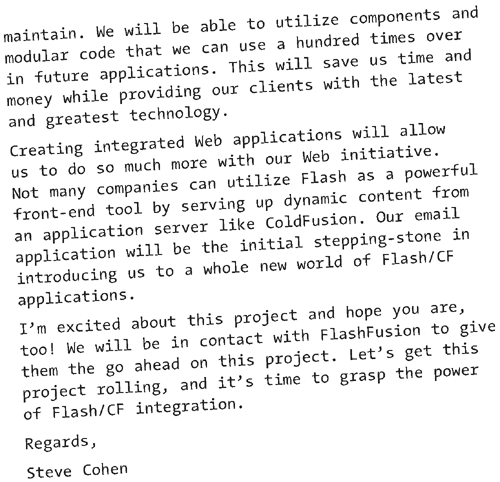Integration
| The integration between Flash and ColdFusion is tighter than with any other technologies researched, and it has grown with the MX versions of these products. This is to be expected, as Flash and ColdFusion are Macromedia's flagship client and server products. Complex data such as recordsets, structures, and arrays can be passed between Flash and ColdFusion via the Flash Gateway. The Flash Gateway is new to Flash MX and allows developers to harness the power of the Flash UI while communicating with the ColdFusion server to provide dynamic content. Another powerful new feature is the NetConnect Debugger, which displays server messages and errors in real-time format. This allows the developer to troubleshoot the application in a timely manner without having to dig around to find what is causing the error. The error messages usually provide good information as to what service caused the failure and what needs to be fixed. Since integration of the client and server is the basis of the email application, Simpleton has chosen Flash for the GUI and ColdFusion for the application server. FlashFusion has drafted a simplified diagram of the communication process, shown in Figure III-2.5. Figure III-2.5. The communication process for the email application
After presenting this information to Simpleton, a memo was drafted by the CEO and presented to the Simpleton development group.
The Simpleton executives met with FlashFusion on Monday, April 8, to give it the go-ahead on the project and get an estimate on turnaround time. Simpleton stressed the need for a quick turnaround, and Flash Fusion gave an estimated completion time of 30 days. Application MockupFlashFusion then proceeded with some mockup screen shots of the application and ideas for the application logic. Once the application is accessed through a Web browser the first thing that displays will be a popup window that prompts the user for their login information (Figure III-2.6). Figure III-2.6. Popup window prompting user to enter their account information
The user can enter their account information in the popup widow and then choose whether or not to have their information stored locally. If they decide to store their information then this window will not display the next time the access the email application. After they have logged in to the application the user will have many options which include:
The best approach to this application will make it simple to use and not confuse the user with too many screens. FlashFusion will take the approach of maintaining most of the information on a single screen with popup windows to handle certain tasks. Most of the information will be displayed in separate components laid out on a single screen (Figure III-2.7). Figure III-2.7. Mockup of user interface for the email application
Components will be used extensively to provide increased functionality for the end user. The buttons will be laid out across the top, similar to many applications, and will perform some of the most important functions within the application. All of these buttons will be tied into code that will perform any necessary actions. The Tree component will be used to display the user's Inbox along with any custom folders that the user has created. There will also be buttons that will allow the user to add and delete folders. Another button will be added to allow users to move selected email messages to certain folders. The ListBox component will display the email header information such as the subject, email address of the sender, and date of the email. When an email message is selected for reading the text field will be populated with the email contents. A scroll bar will be used to handle any information that cannot fit into the text field. The power of this approach is that the application will not have to be refreshed each time the user performs a certain action. The information will be displayed in real-time which should minimize the amount of waiting time within the application. |
EAN: 2147483647
Pages: 114




